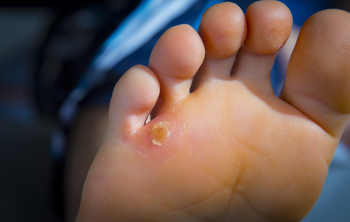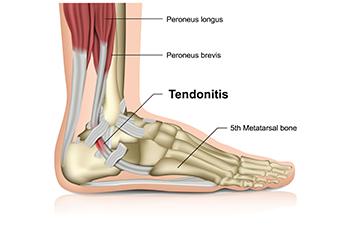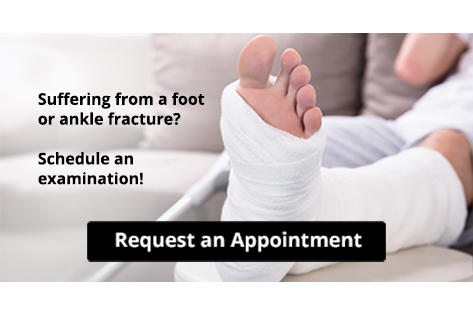Items filtered by date: January 2023
An Annoying Kernel of Truth: Corns Happen

Foot corns are common. They resemble calluses but they are smaller, harder, and often more painful. The discomfort and irritation caused by corns is a result of the body’s response to friction or pressure from repetitive actions or ill-fitting shoes that cause friction. There are three types of corns. A hard corn is the most common type of corn and is a small, concentrated area of hard skin, usually found within a wider area of thickened skin. A soft corn is white or gray in color and has a rubbery texture. Hard and soft corns usually show up between toes. A seed corn is often found on the bottom of the foot and is smaller. Corns can be safely treated, and it is possible to prevent future corns. First, stop movements that cause repetitive pressure on your feet and wear well-fitting shoes that do not rub against the feet and cause pain. If the corn does not go away, see a podiatrist who can provide additional and successful treatment of corns.
If you have any concerns regarding your feet and ankles, contact Kinna Patel, DPM of Sava Podiatry & Wellness Centers. Our doctor will treat your foot and ankle needs.
Corns: What Are They? and How Do You Get Rid of Them?
Corns can be described as areas of the skin that have thickened to the point of becoming painful or irritating. They are often layers and layers of the skin that have become dry and rough, and are normally smaller than calluses.
Ways to Prevent Corns
There are many ways to get rid of painful corns such as wearing:
- Well-fitting socks
- Comfortable shoes that are not tight around your foot
- Shoes that offer support
Treating Corns
Treatment of corns involves removing the dead skin that has built up in the specific area of the foot. Consult with Our doctor to determine the best treatment option for your case of corns.
If you have any questions please feel free to contact our office located in Smyrna, GA . We offer the newest diagnostic and treatment technologies for all your foot and ankle needs.
Get Professional Care for a Broken Foot or Ankle
Stretching and Strengthening the Achilles Tendon

Many problems can affect the Achilles tendon. Inflammation of the Achilles tendon is known as Achilles Tendonitis and is the most common injury to this site. It is generally caused by intense or excessive physical activity. If this condition is not treated properly, other afflictions can develop, such as Achilles tendinopathy where there is degeneration or damage to the collagen in the Achilles tendon, Achilles tendinosis where there are micro-tears to the tendon, and an Achilles tendon rupture where there is a partial or complete tear to the tendon. Symptoms of Achilles tendon issues include tightness, pain, weakness, and mobility issues. A variety of exercises can be done to generate healing and improve mobility. If you suffer from Achilles tendon discomfort, you should seek the counsel of a podiatrist for proper a diagnosis and treatment plan.
Achilles tendon injuries need immediate attention to avoid future complications. If you have any concerns, contact Kinna Patel, DPM of Sava Podiatry & Wellness Centers. Our doctor can provide the care you need to keep you pain-free and on your feet.
What Is the Achilles Tendon?
The Achilles tendon is a tendon that connects the lower leg muscles and calf to the heel of the foot. It is the strongest tendon in the human body and is essential for making movement possible. Because this tendon is such an integral part of the body, any injuries to it can create immense difficulties and should immediately be presented to a doctor.
What Are the Symptoms of an Achilles Tendon Injury?
There are various types of injuries that can affect the Achilles tendon. The two most common injuries are Achilles tendinitis and ruptures of the tendon.
Achilles Tendinitis Symptoms
- Inflammation
- Dull to severe pain
- Increased blood flow to the tendon
- Thickening of the tendon
Rupture Symptoms
- Extreme pain and swelling in the foot
- Total immobility
Treatment and Prevention
Achilles tendon injuries are diagnosed by a thorough physical evaluation, which can include an MRI. Treatment involves rest, physical therapy, and in some cases, surgery. However, various preventative measures can be taken to avoid these injuries, such as:
- Thorough stretching of the tendon before and after exercise
- Strengthening exercises like calf raises, squats, leg curls, leg extensions, leg raises, lunges, and leg presses
If you have any questions please feel free to contact our office located in Smyrna, GA . We offer the newest diagnostic tools and technology to treat your foot and ankle needs.









